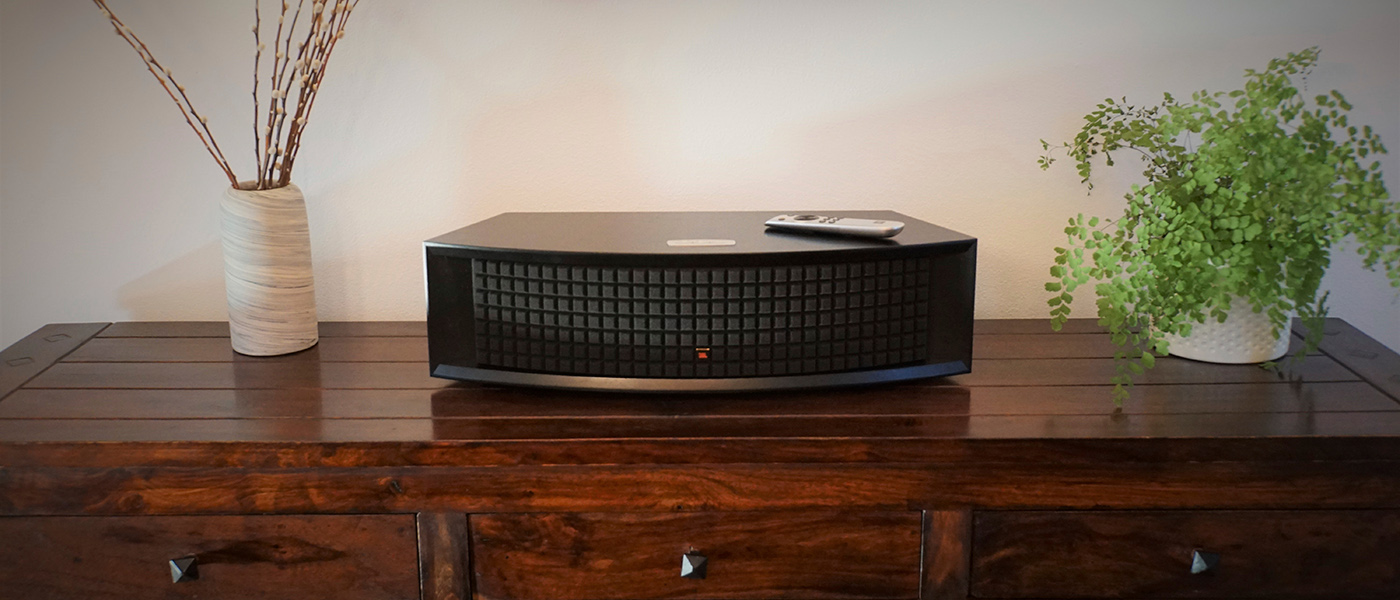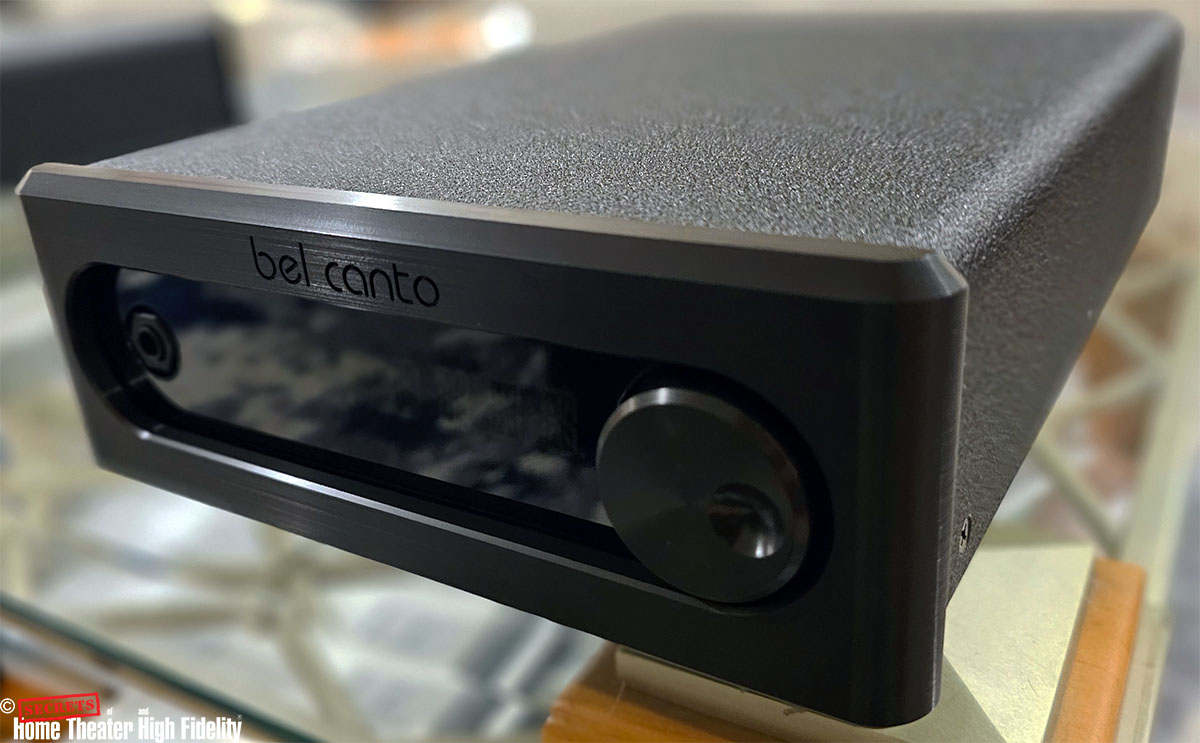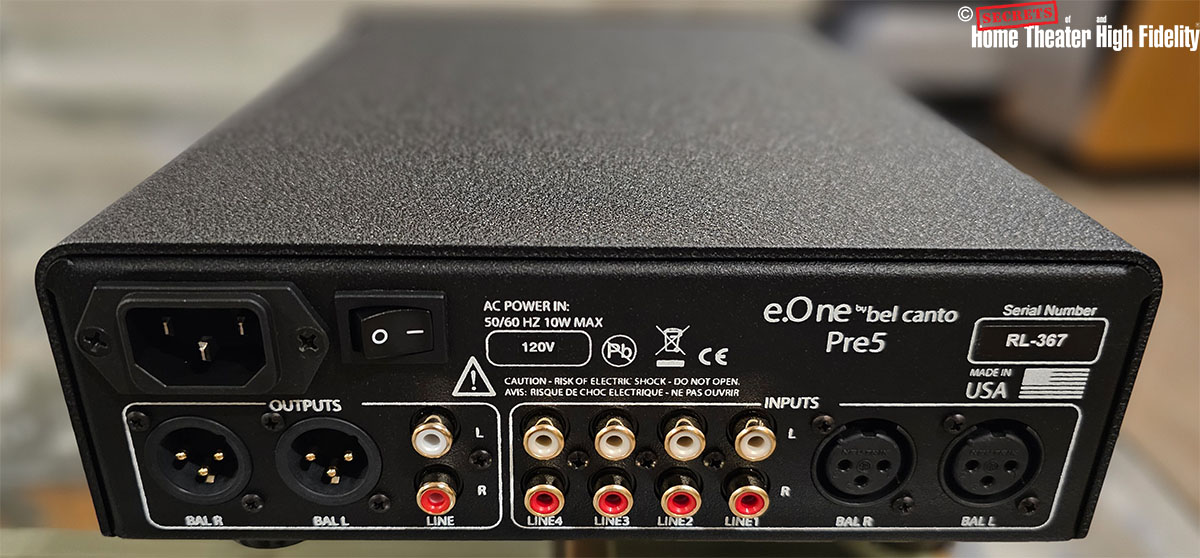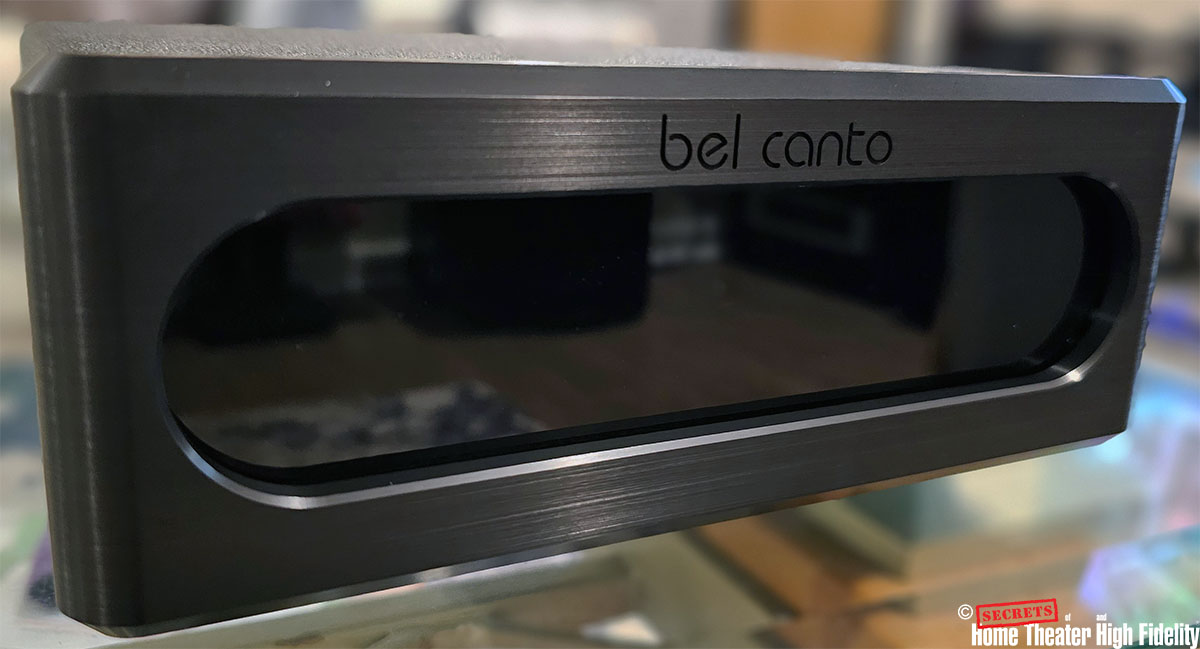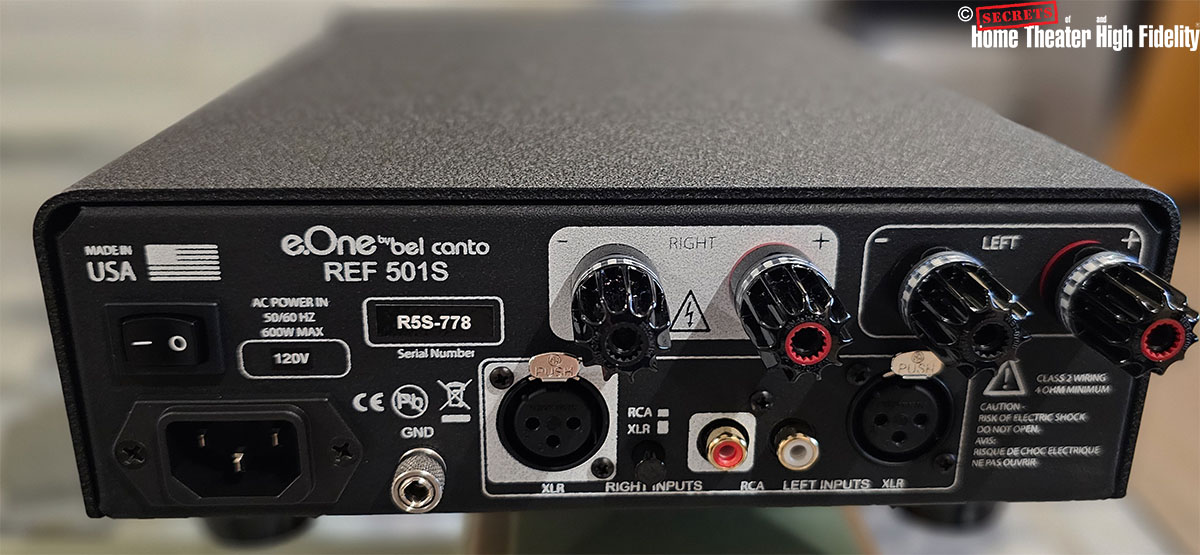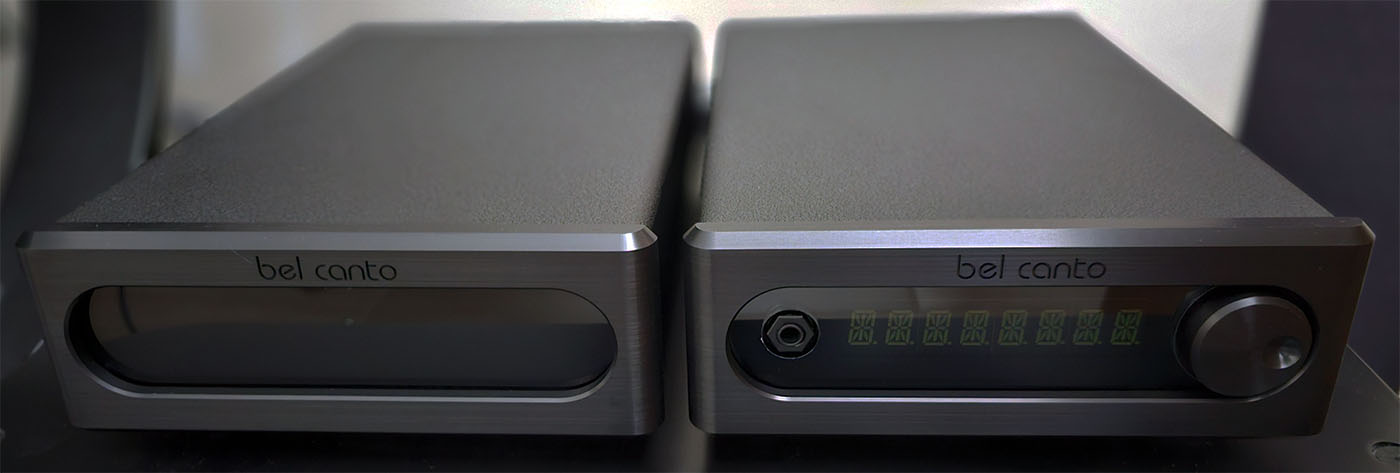 Bel Canto Pre5 and REF501S pair
Bel Canto Pre5 and REF501S pair
Bel Canto Design was established in 1991 and has earned a solid reputation in the high-fidelity audio industry. The two components reviewed here, the Pre5 preamplifier and REF501S stereo amplifier, are from the company’s most affordable product line, the e.One series. Although these components feature the attractive appearance of lifestyle products, they should not be mistaken as ones. These deceivingly simple and compact components can deliver sonic performance that suggests they squarely belong in the hi-fi components category.
Pre5 preamplifier
- Fully balanced analog preamplifier.
- XLR and RCA input and output connections.
- Remote control operation.
REF501S amplifier
- XLR and RCA input connections.
- Powerful beyond its size (250 W/channel into 4-ohm loads).
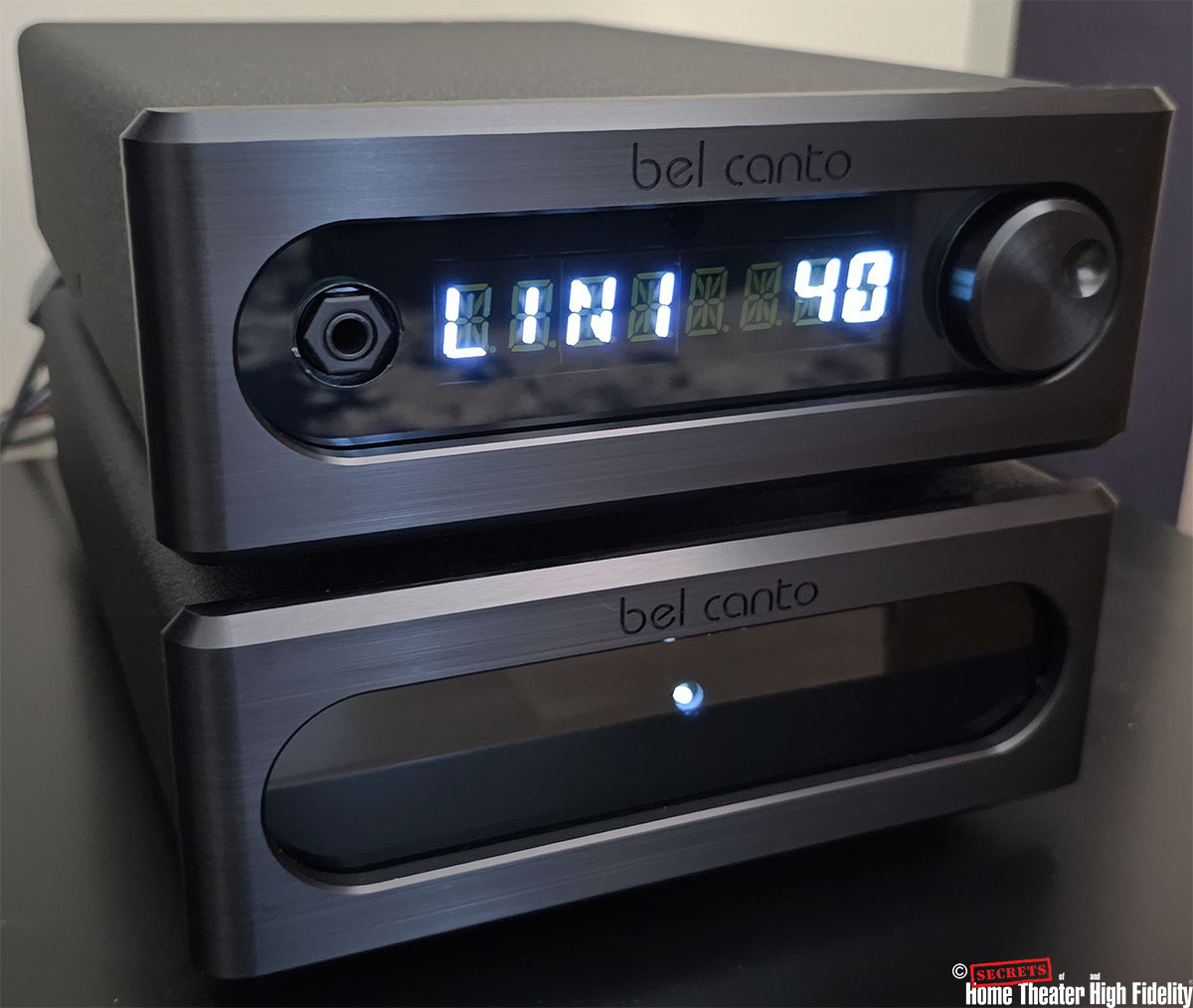 Stacked Bel Canto Pre5 and REF501S
Stacked Bel Canto Pre5 and REF501S
Bel Canto Design has been producing high-quality hi-fi components since 1991. It is one of the audio companies that seem to be steady in its presence, founded and led by Chief Engineer John Stronczer since the beginning. Over the years, Bel Canto has developed a reputation for producing technically sophisticated good-sounding audio components. Bel Canto’s products typically sport elegantly simple appearances while embracing minimalist user interfaces.
Bel Canto is not an unfamiliar brand to me. I have been a fan of its products for a long time. I have never formally reviewed one, but I have been using a variety of its products for quite some time. I even use some of these Bel Canto products as my review references to help me gauge the performance levels of comparable products. From its Tripath amplifiers (eVo 200.2 and eVo6 gen II) to the newer e.One components (CD3T, DAC3.7, REF500S), there always seems to be a Bel Canto product of one type or another tagging along as my audio systems evolve.
Therefore, I was very excited to get the opportunity to review the current iteration of its e.One components, specifically the Pre5 preamplifier and REF501S amplifier. The combo costs just a tad below $5,000, which is outside of the budget price range but not in the exuberantly expensive price category either. Still, $5,000 is not chump change and my review below can hopefully shed some light on the products’ worth.
Analog Inputs:
Number of Inputs:
1 XLR and 4 RCA
Number of Outputs:
1 XLR and 1 RCA
Balanced Input Impedance:
10k Ohms
Single-ended Line Input Impedance:
50k Ohms
Maximum Input Level Balanced:
5Vrms
Maximum Input Level Single-Ended:
2.5Vrms
Output Connections:
XLR and RCA Outputs
Maximum Output Level, RCA and XLR:
5Vrms
Distortion at 1Vrms Output:
<0.002% 1KHz
Dynamic Range:
125dB A-Weighted re: 5Vrms
Single-ended Line Out Impedance:
50 Ohms
Balanced Output Impedance:
100 Ohms
General:
Power Usage On:
4W
Power Usage Off:
0.0W
Power Input:
100-120VAC, 220-240VAC 50/60 Hz
Dimensions:
8.5″ W x 12″ D x 3.5″ H (216 mm x 305 mm x 88 mm)
Weight:
13lbs. (5.9 kg)
MSRP:
$2,495
Power Output 1% THD:
2 x 250W per channel
Minimum Load:
2 ohms per channel
Peak Output Current:
17.5 amperes per channel
Frequency Response:
+/-3 dB 0Hz-50KHz, all loads
THD+N:
0.003% 1W, 1KHz, 4 ohms
IMD (CCIF):
0.0003% 1W, 14:15KHz, 4 ohms
Voltage gain:
27dB
Damping factor:
>1000
Output Impedance at 100Hz:
<8 milliohms
Dynamic Range:
121dB
Input Voltage for Max Output:
1.4Vrms
Input connections:
Single-ended RCA or balanced XLR
RCA input impedance:
47Kohms
Balanced input impedance:
95Kohms
Output connections:
2-sets WBT Nextgen 5-way binding posts
Power On usage:
12W
Power Off usage:
0.0W
Internally Set Operating Voltages:
100-120VAC or 230-240VAC 50/60 Hz
Size:
8.5 x 3.5 x 12[inches], 216 x 88 x 305[mm] (W x H x D)
Weight:
12 lbs. (5.5 kg)
MSRP:
$2,495
Company:
SECRETS Tags:
Bel Canto Design, Pre5, Preamplifier, REF501S, Amplifier
Secrets Sponsor
As with the other components in Bel Canto’s e.One series, the Pre5 and REF501S are dimensionally compact, sporting half-width chassis and low height profile (3.5-inch high). Their brushed aluminum faceplate design, which has not changed in more than a decade, exudes a simple yet elegant vibe. I guess with such a timeless design, change is not really needed. The review samples come in black, but a silver faceplate option is also available. Because the rest of the components are finished in black, the silver faceplate exudes a more striking two-tone appearance. Both finishes are equally elegant, and your choice will likely be driven by your taste and the appearance match with the rest of your components.
Compared to Bel Canto’s previous product generations, these new components weigh less due to the use of an all-aluminum chassis (as opposed to steel). Because of my familiarity with past Bel Canto products, I was taken by surprise by these products’ light weight when I first took them out of their boxes. My REF500S amplifier, which is the predecessor of the REF501S, was noticeably heavier than the REF501S by comparison. Besides the weight difference, nothing changed on the build and finish quality aspects, which are excellent.
The Pre5 employs a fully balanced internal architecture to minimize noise and distortion. For a preamplifier, the front panel of the Pre5 is as uncluttered as it gets. A central display, a round control knob on the right side, and a headphone jack on the left side are all that occupy the Pre5 front panel. The metal control knob is of a continuously rotating variety with a push-switch function. Rotating the knob controls the volume, while briefly pressing it toggles sequentially through the available inputs. Pressing and holding the control knob for 2-3 seconds will mute the preamplifier.
The front-panel display shows the status of operation of the preamp in sufficiently large bright- white digits/letters, which can be easily read from 10-12 ft away. This display is not dimmable; however, it can be turned off if desired. The ‘Display’ button on the remote control will toggle through several display options: normal mode, firmware revision display, product name, and display off. In display-off mode, the display remains off when the preamplifier is in operation and will only come on for five seconds when a status change is detected. In normal mode, the display shows the active input and volume level by default. When the input or volume level is changed, the part of the display associated with the change will have an increased brightness for a few seconds before returning to its normal brightness. Bel Canto recommends leaving the Pre5 powered on all the time for the benefit of the sound quality and thus it does not have a power on/standby switch like most preamplifiers. Since there is no on/standby switch, I usually just put the display in the display-off mode when not in use.
The Pre5 may look like a no-frills product due to the lack of buttons/switches on its front panel, but it is actually a full-featured analog preamplifier. To access its less commonly used functions, like adjusting balance or putting an input in Home Theater Bypass mode, one just needs to get into its menu system (called programming mode in the Bel Canto’s manual) and navigate to the desired function from there. The programming mode can be accessed by pressing and holding the knob on the front panel for a few seconds and then using short presses/turning the knob to navigate through it or by pressing the Program button on the remote and then using the arrow buttons to navigate and scroll through the programming options. This modus operandi may not be intuitive for first-time users, but adapting to it should be easy and consume minimal effort.
Bel Canto did a good job in making use of the limited rear-panel landscape of the Pre5 with a neat input-output connector arrangement. The Pre5 can accommodate 1 balanced (XLR) and 4 unbalanced (RCA) line-level inputs and provides 1 balanced and 1 unbalanced output. No phono input is available. Besides these input-output connectors, the rear panel also houses an on-off switch and a power cord plug. Any of the preamplifier’s inputs can be put into fixed-volume Home Theater Bypass (HTB) mode for easy integration with a home theater receiver or surround processor.
The Pre5 is equipped with an IR remote control, which can replace the functions of the front knob. This remote control is medium-sized with a plastic enclosure and rubber buttons. Bel Canto uses this remote for its other products too, hence it has more buttons than needed to operate the preamplifier. I found that the Pre5 is quite responsive to the remote commands and has quite a wide reception angle. My only quibble is the lack of backlight on the remote, which could cause an issue for users in dark environments.
The REF501S amplifier sports an even simpler front panel, featuring only a small white LED light indicator that is illuminated when the amplifier is on. Unlike most power amplifiers, there is not an on/standby button on its front panel. This is because, just like the other Bel Canto products, it is recommended to leave the REF501S on all the time to gain sonic benefit. It consumes only very little power in standby and thus shutting it down using the on/off switch on the rear panel is only needed if the amplifier is not going to be used for an extended period. The REF501S uses Hypex NCore Class D amplifier modules, hence it runs cool even when pushed hard. Don’t let its compact size fool you; the REF501S is a relatively powerful amplifier that can churn out 250 W/channel into 4-ohm loads. The review sample comes with a black aluminum faceplate with a black glossy middle recessed panel, which looks handsome. Again, if you prefer a two-tone appearance, the silver faceplate option is available.
The REF501S can accept either balanced or unbalanced inputs. There is a small push button located near the input connectors on the rear panel to select the type of connection to use. A pair of speaker terminals is available for each left and right amplifier output. I appreciate the fact that Bel Canto utilizes high-quality WBT five-way binding posts for the REF501S speaker terminals.
For most of the review evaluation, I connected the Pre5 to the REF501S using the balanced connection. The speakers used for the evaluation were the Revel Ultima Studio tower. The front end used comprised the Auralic Aries G1 streamer and the PS Audio PerfectWave Transport, whose digital outputs were connected to the PS Audio DirectStream DAC. I summoned my Bel Canto REF500S, which is the predecessor of the REF501S, towards the end of the review for comparison.
Coming from owning a few Bel Canto products over the years, I expected no less than good performance from this Bel Canto combo. I am delighted to report that the Pre5 and REF501S pair effortlessly met my performance expectations with flying colors. Overall, I found the combo to be a delight to use and free from glitches. The Pre5 and REF501S combo sounded neutral sonically with great clarity and balance across the audible frequency spectrum. Its musical presentation was rich in texture and never sounded too lean or too thick. The midrange was solid, the treble details were excellent, and the bass rendition was sufficiently articulate and authoritative. The Pre5 and REF501S could effortlessly make my speakers disappear and project an intimate soundstage with sufficient width and depth.
 Youn Sun Nah’s Same Girl (2010) album cover
Youn Sun Nah’s Same Girl (2010) album cover
Youn Sun Nah, “Same Girl (2010)”
Just like what I usually do, I started my evaluation by playing a lot of music with strong vocal content. The Pre5 and REF501S combo did not disappoint in the vocal reproduction aspect, reproducing human voices with excellent naturality. Youn Sun Nah’s voice in the track Song of No Regrets from her Same Girl album (2010) was conveyed beautifully through the Pre5 and REF501S combo. Even her breathing which was captured in the recording sounded palpable, adding realism to the whole presentation. The separation of sounds coming from the accompanying musical instruments was nicely portrayed. The sound of each instrument seemed to emanate from its specific steady spatial location on the stage, which demonstrated the adept imaging capability of the combo.
 Tom Jones’ Spirit in the Room (2012) album cover
Tom Jones’ Spirit in the Room (2012) album cover
Tom Jones, “Spirit in the Room (2012)”
The Pre5 and REF501S combo also did justice to Tom Jones’ baritone voice heard on the Spirit In the Room album (2012). Tom Jones’ voice in the track Dimming of the Day from that album sounded natural and full-bodied. The Pre5 and REF501S pair were also quite adept in deciphering the sense of space from the recording. The intimate stage of the performance was realistically portrayed. The projected depth of the presentation was satisfying, portraying the drum sound in the track as coming from the far back end of the stage. The bass rhythm in the track sounded deep and punchy, a testament to the REF501S amplifier’s ability to deliver the necessary current to excite the woofer.
 The Last of Us – Season 1 Soundtrack (2023) album cover
The Last of Us – Season 1 Soundtrack (2023) album cover
The Last of Us – Season 1 Soundtrack (2023)
The Pre5 and REF501S combo handled various kinds of music admirably. Through the Revel Ultima Studio speakers, the combo presented a sufficiently wide and deep soundstage with slightly forward image projection. Hence, there was a sense of intimacy with the musical presentation played through this combo. This was probably more due to the characteristics of the REF501S amplifier rather than the Pre5, as when I paired the Pre5 with my Krell KAV-2250 amplifier, the image did not appear to be as forward. Regardless of the type of image you get, however, the Pre5 and REF501S combo always sounded balanced and rich in musical textures across the frequency spectrum. As a result, this combo produced satisfying results in conveying the excellent music by Gustavo Santaolalla and David Fleming in the soundtrack album of Season 1 of The Last Of Us series (2023). I like especially its title track, which is also the opening track of the album. The Bel Canto combo conveyed the grandness of this track convincingly with its excellent musical nuance and texture rendition as well as its authoritative bass. The soundstage depicted was sufficiently wide and deep, and the layering as well as the separation of the sounds of these various instruments in the stage was presented succinctly, adding more realism to the whole presentation.
I had a chance to try briefly the Pre5 headphone feature and found it to be a decent performer, which should delight the headphone users out there. Therefore, without reservation, I could say that the Pre5 and REF501S were competent performers all around. Towards the end of the review, I swapped out the REF501S with its predecessor, the REF500S. The comparison revealed slightly different sonic characteristics between the two amplifiers. It seemed that the REF501S traded a slightly warm and laid-back presentation of the REF500S for better transparency and a slightly more intimate soundstage. To be clear, this comparison did not reveal that one was better than the other. In my opinion, the two amplifiers exhibited about equal level of performance; they are just slightly different in their musical presentations.
Secrets Sponsor
The Bel Canto Pre5 preamplifier and REF501S amplifier are solid hi-fi products that are reasonably priced and perform extremely well in their respective categories.
- Compact design and great build quality.
- Despite its compact size, the Pre5 preamplifier is fully featured and includes a home-theater bypass feature.
- Both products accommodate XLR and RCA connections.
- Solid all-around sonic performance.
- Backlit remote.
I enjoyed immensely the time I spent reviewing the Bel Canto Pre5 preamplifier and REF501S amplifier. They are solid hi-fi performers who deliver respectable all-around sonic performances. Their compact designs and clean elegant appearance are deceivingly simple, yet this is a full- featured analog preamplifier and a quite powerful amplifier that can comfortably compete with similarly priced hi-fi components out there. Considering their strong all-around sonic performances as well as their excellent build quality and finish, the Pre5 and REF501S should be in your short audition list for separate preamplifier and amplifier combinations in the sub $5k category.


